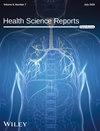Artificial Intelligence Models Accuracy for Odontogenic Keratocyst Detection From Panoramic View Radiographs: A Systematic Review and Meta-Analysis
Abstract
Background and Aims
Odontogenic keratocyst (OKC) is a radiolucent jaw lesion often mistaken for similar conditions like ameloblastomas on panoramic radiographs. Accurate diagnosis is vital for effective management, but manual image interpretation can be inconsistent. While deep learning algorithms in AI have shown promise in improving diagnostic accuracy for OKCs, their performance across studies is still unclear. This systematic review and meta-analysis aimed to evaluate the diagnostic accuracy of AI models in detecting OKC from panoramic radiographs.
Methods
A systematic search was performed across 5 databases. Studies were included if they examined the PICO question of whether AI models (I) could improve the diagnostic accuracy (O) of OKC in panoramic radiographs (P) compared to reference standards (C). Key performance metrics including sensitivity, specificity, accuracy, and area under the curve (AUC) were extracted and pooled using random-effects models. Meta-regression and subgroup analyses were conducted to identify sources of heterogeneity. Publication bias was evaluated through funnel plots and Egger's test.
Results
Eight studies were included in the meta-analysis. The pooled sensitivity across all studies was 83.66% (95% CI:73.75%–93.57%) and specificity was 82.89% (95% CI:70.31%–95.47%). YOLO-based models demonstrated superior diagnostic performance with a sensitivity of 96.4% and specificity of 96.0%, compared to other architectures. Meta-regression analysis indicated that model architecture was a significant predictor of diagnostic performance, accounting for a significant portion of the observed heterogeneity. However, the analysis also revealed publication bias and high variability across studies (Egger's test, p = 0.042).
Conclusion
AI models, particularly YOLO-based architectures, can improve the diagnostic accuracy of OKCs in panoramic radiographs. While AI shows strong capabilities in simple cases, it should complement, not replace, human expertise, especially in complex situations.


 求助内容:
求助内容: 应助结果提醒方式:
应助结果提醒方式:


